10 Cars That Changed Dramatically from Concept to Production
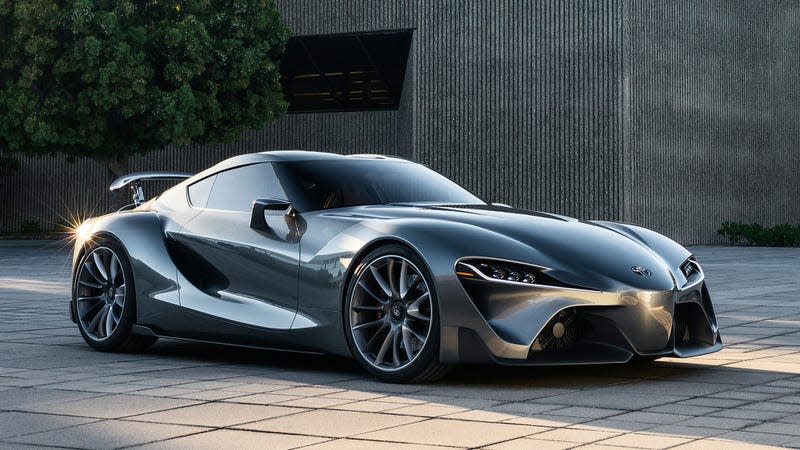
2014 Toyota FT-1 Graphite concept
In rare, celebrated cases, automakers take a car designed to wow people at an auto show (remember those?) and take lots of care to adapt them to production as faithfully as possible. We tend to fondly remember the cars that do this well, like the Dodge Viper and Ford GT. But sometimes, plans change. There could be a variety of reasons why, but the result is the car you can buy looking considerably different than the car you were initially sad you couldn’t.
Today, we’re recounting 10 instances where the concept-to-production pipeline took one vehicle in and spat something different out. The changes aren’t always for the worse, mind, but they inform the history of some of our most beloved nameplates all the same. Onward!
Read more
Chrysler Crossfire
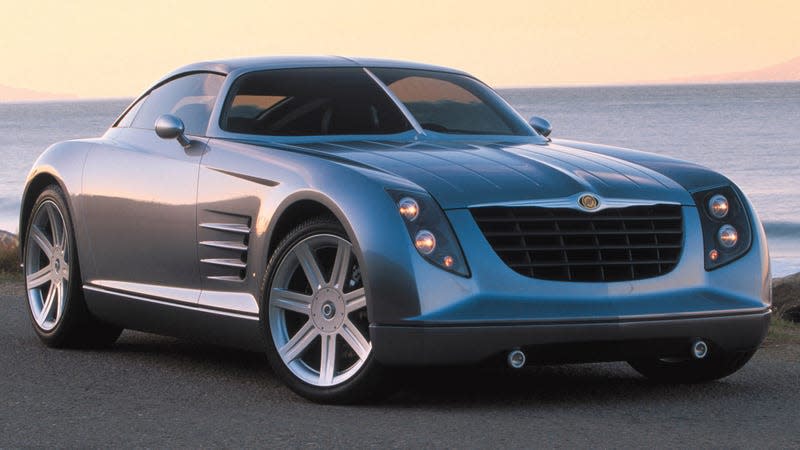
2001 Chrysler Crossfire (concept)
“The Chrysler Crossfire — first shown at the Detroit auto show in 2001 — is as faithful a translation from concept to production as any in recent memory.” So reads a Car and Driver article about Chrysler’s then-new, Mercedes SLK-based roadster, that emerged on the scene for the 2004 model year. Thing is, I’ve never been so sure.
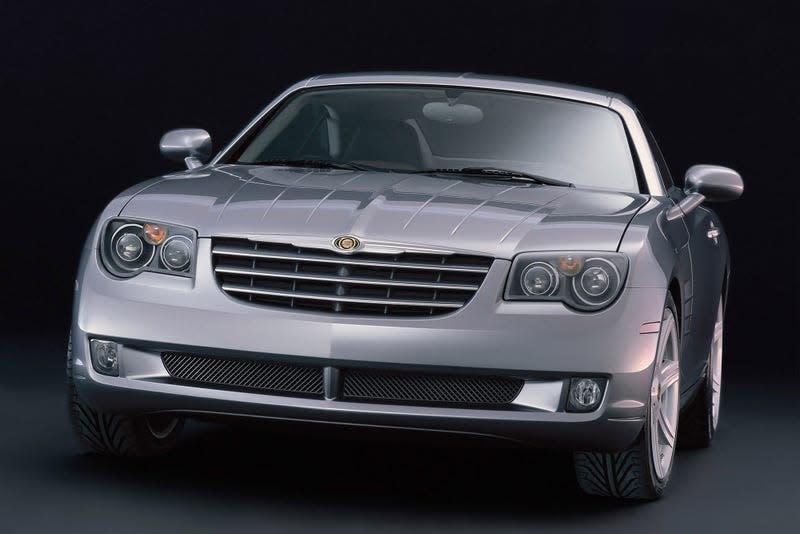
2004 Chrysler Crossfire (production)
Oh, there are definitely similarities between the two Crossfires — the cartoonish, upright greenhouse; the dramatic “boat tail”; those yacht-aping hood strakes. But the front end is entirely different, and there’s no use picking that apart with words. I wouldn’t even say the production face is worse — just different. If you’ve ever been curious about the change, I recommend giving that C&D story from back in the day a read, because it goes into detail about the challenges Chrysler faced in adapting the essence of the Crossfire concept’s exterior into something that might work on an SLK floorplan.
Dodge Charger
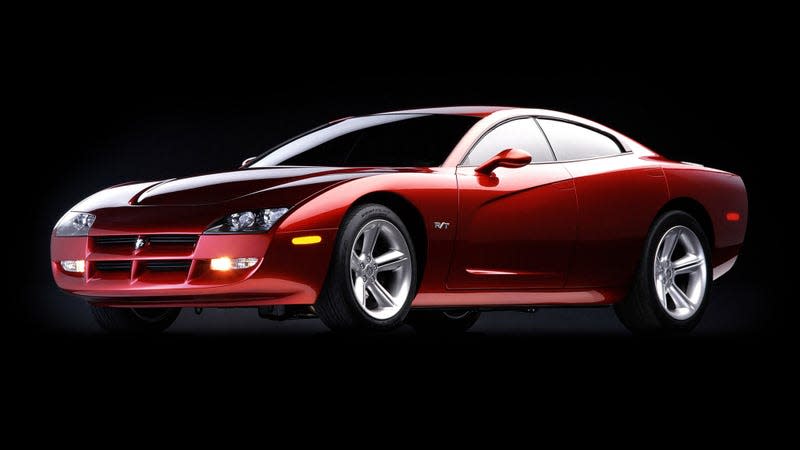
1999 Dodge Charger (concept)
Chrysler pumped out plenty of concepts throughout the ’90s and into the millennium, and a fair number of them did wind up being built and sold with minimal changes. The 1999 Charger concept was not one of those.
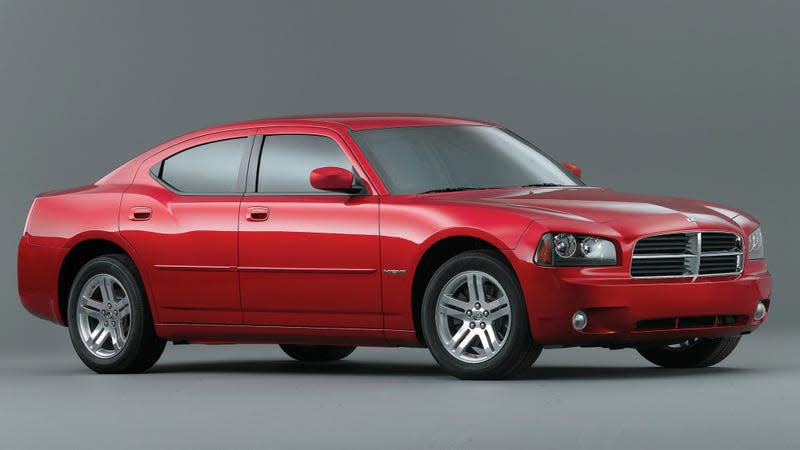
2005 Dodge Charger (production)
By the time the long-awaited 2005 rebirth of the Charger happened, gone was the wedge silhouette, Cheshire grin and coupe roofline that made the earlier prototype so distinctive. The LX-based Charger was more or less an understated Chrysler 300 with less jewelry; it didn’t have the purpose, sleekness or cunning aggression of the ’99 concept. It also wasn’t powered by compressed natural gas, which may help explain the change in direction.
Kia Stinger
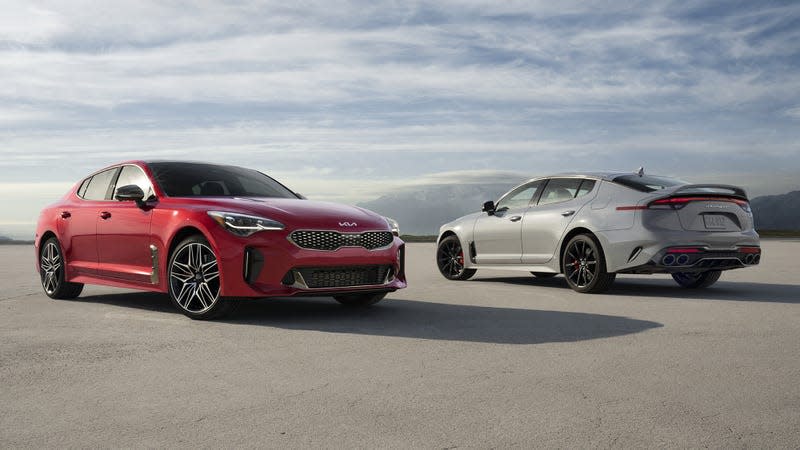
2022 Kia Stinger (production)
The Kia Stinger’s fate is uncertain, but frankly, I’m not optimistic. Rumors of a car’s death typically don’t swirl without a hint of truth to them. It’s fair enough that we’re back asking these questions, because it took us so long to get the Stinger to begin with.
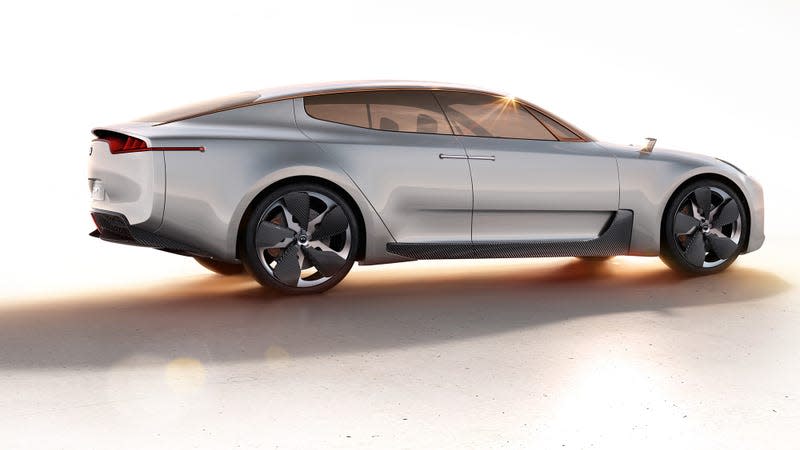
2011 Kia GT (concept)
In this case, the production model was previewed with not one, but two concepts. The first one, the 2011 GT, was clearly the primary inspiration for what would eventually become the Stinger six years later. The concept had a softer nose and a more slender profile, with the sort of low greenhouse you could only really ever get away with on a design study. It also had rear-hinged doors. I understand why it had to change, but I generally prefer the GT all around.
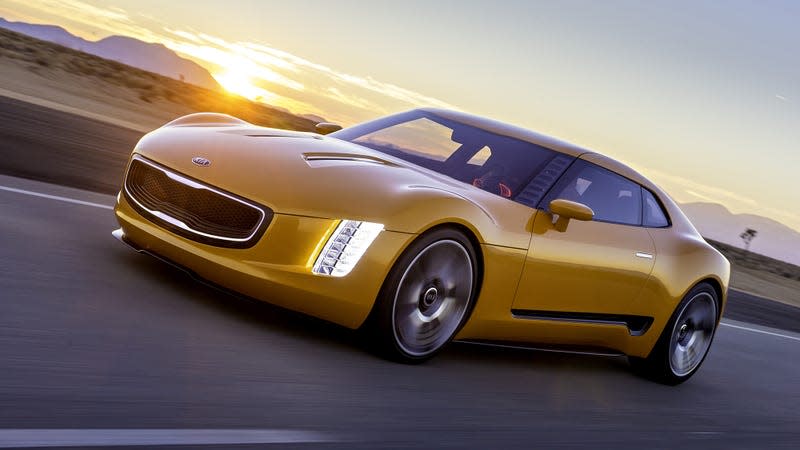
2014 Kia GT4 Stinger (concept)
Three years later, though, Kia turned up with something unexpected: another smaller, simpler concept called the GT4 Stinger. What’s more, this one only had two doors. It looked incredible, both on paper and in packaging, and in the months after its reveal we wondered aloud what became of it. That was in early 2015 — two years before the four-door production Stinger finally hit the market. All told, we’ve spent more time wondering about the Stinger’s existence than appreciating it while we’ve had it, and that’s just a damn shame.
Mazda RX-8
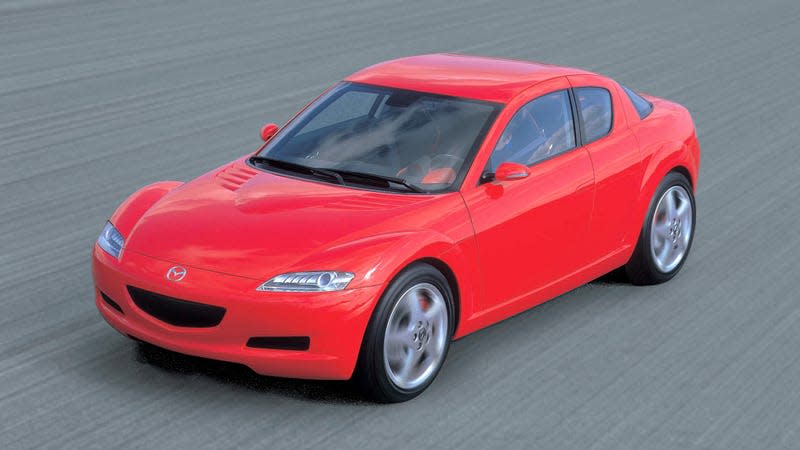
2001 Mazda RX-8 (concept)
With the RX-8, Mazda could have just delivered a patch on the FD RX-7 — another svelte, compact, rotary-powered coupe. Instead, it decided to give us something left field: a four-seater with half, rear-hinged doors, making for a more practical everyday sports car. (Also containing an engine pretty much worse by every measure, but that’s besides the point.) The original RX-8 concept unveiled in 2001 was decidedly cleaner and colder, but refreshing in that way. It was actually a development of the earlier RX-Evolv concept shown in Tokyo in 1999.
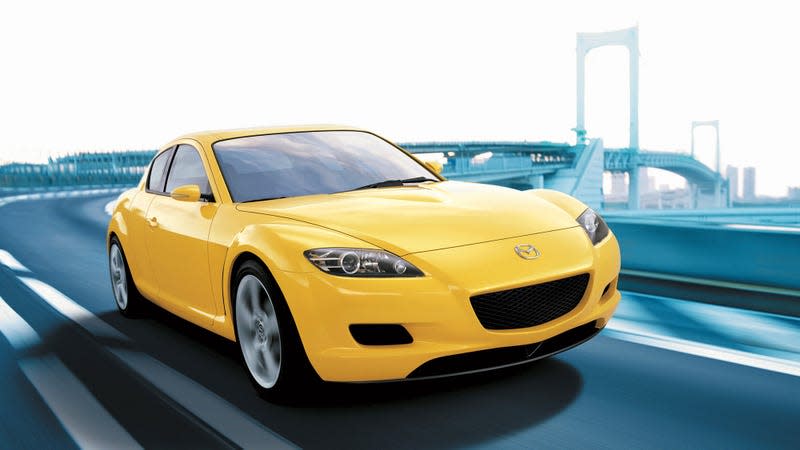
2003 Mazda RX-8 (production)
The final car is certainly more emotive, but perhaps busier and more disjointed as a result. It’s emblematic of car design as the decade wore on, rather than the visions of the future automakers were treating us to at the precipice of the new millennium. The less we say about the mid-cycle fish face, the better.
Toyota 86/Scion FR-S
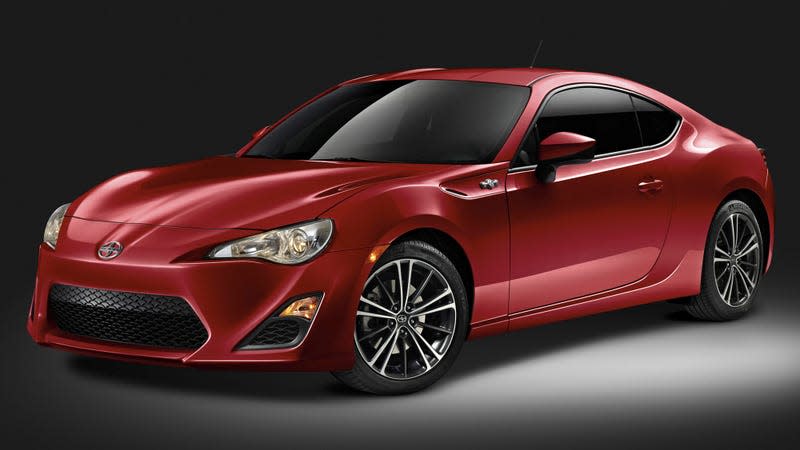
2013 Scion FR-S (production)
The car that would eventually become known as the Scion FR-S, then the Toyota 86 and now the GR86 sure did take a long time getting here. So long — and so long ago — that it’s easy to forget how different the first pitch for the little coupe was.
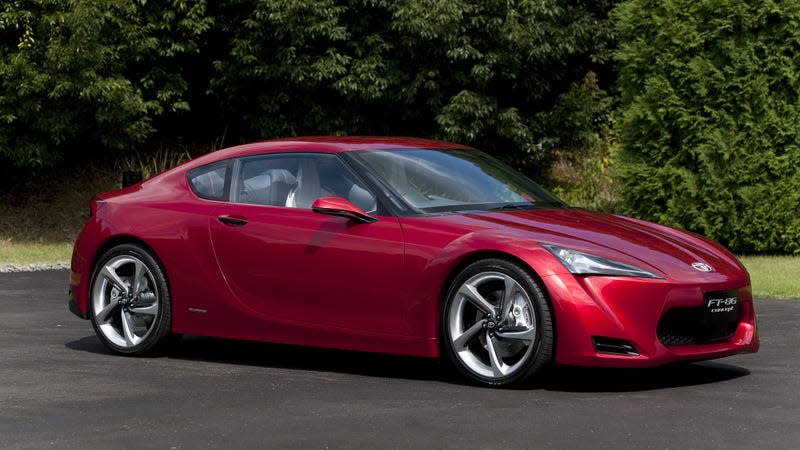
2009 Toyota FT-86 (concept)
The original FT-86 concept from 2009 determined the basic proportions, but went for a blockier, more chiseled appearance, lacking the eventual production car’s athletic haunches and use of negative space. I recall driving it in Gran Turismo 5, and looking forward to the road-going version.
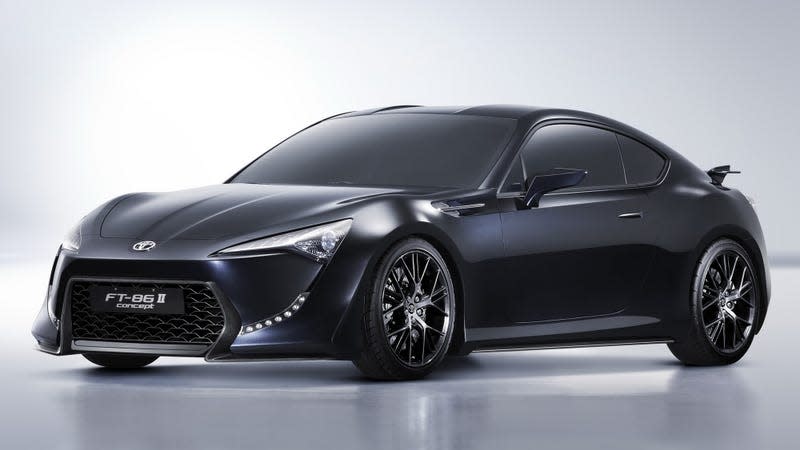
2011 Toyota FT-86 II (concept)
Toyota refined that design with the FT-86 II in 2011. By this time — and with the Scion FR-S’ market debut just around the corner — it’s clear the final look of the car had already been decided. The side windows, for example, appear a dead ringer for those on the production version. Still, the lighting on the FT-86 II is perfect, and as I was a huge fan of the original concept, I remember feeling that Toyota massively dropped the ball in adapting the FT-86 to the real world. Looking back, I’ve grown to appreciate the car we did get.
Nissan GT-R
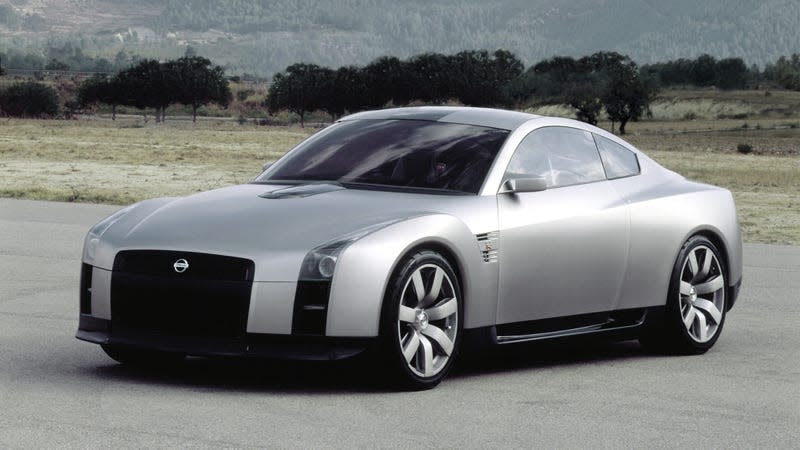
2001 Nissan GT-R (concept)
Only four years had passed between the initial 2001 Nissan GT-R concept and the GT-R Proto in 2005, which strongly previewed the R35 we know today. In that time, Nissan clearly asked itself some philosophical questions about how it wanted its next-generation performance flagship to come off. The techy, mature, minimalist approach was dismissed, giving the R35 more presence.
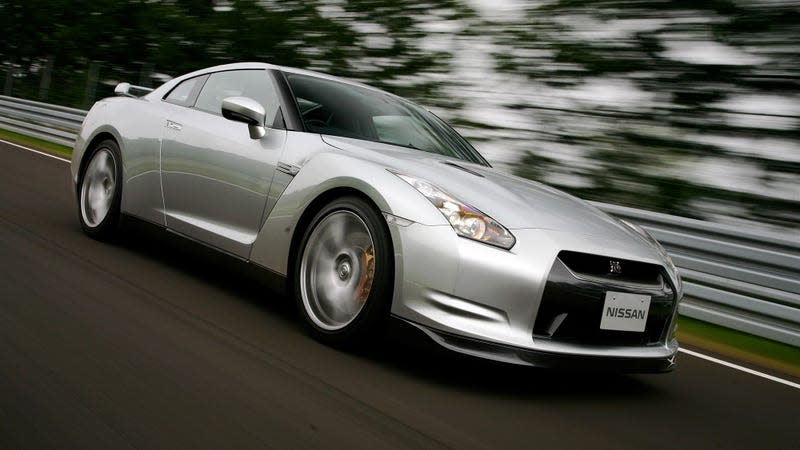
2008 Nissan GT-R (production)
It was a smart move. Like the original RX-8 design, the earliest R35 pitch is very much a snapshot of Japanese car design in 2001, and I love it for that. But the production R35 sort of redefined the everyday sports car and put Nissan on the international stage. It needed a stronger first impression, and I’d say it got one. To the brand’s credit, the GT-R Proto was, all told, very similar to the road car that stunned the world two years later.
Subaru WRX
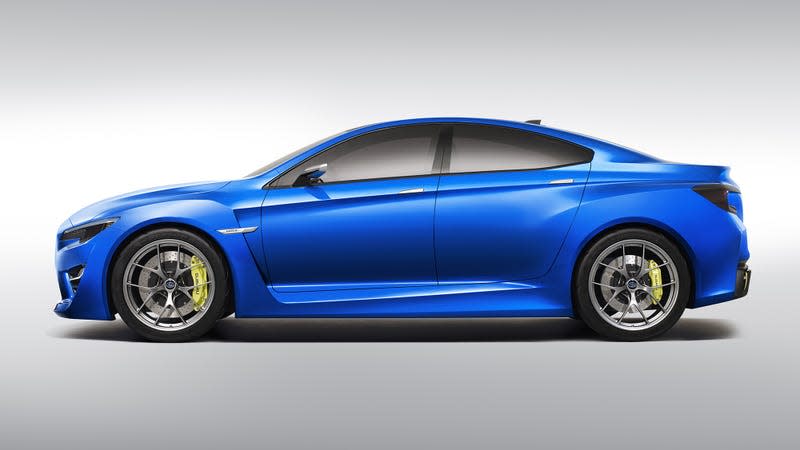
2013 Subaru WRX (concept)
I vividly recall attending the 2013 New York Auto show, seeing the WRX concept and thinking to myself how exciting it was that Subaru was getting serious about design again after the dowdy-looking outgoing Impreza. There was so much to like, especially the mesmerizing headlights, the smooth roofline and short rear overhang. The way the greenhouse meets the decklid actually reminds me a little of today’s Alfa Romeo Giulia, and that’s about as much the opposite of a bad thing as something can be.
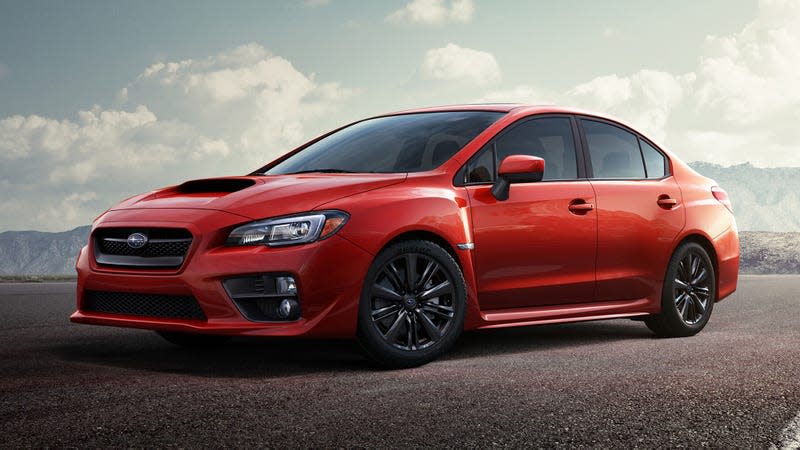
2015 Subaru WRX (production)
I have no idea what transpired on the way to production, but I can only surmise Subaru had zero intention of carrying over any of the concept’s innovative cues the showroom model. It never really look like they tried. The 2022 WRX would remain surprisingly true to Subaru’s Viziv concept that previewed it way back in 2017 — for better or worse, of course. But its predecessor didn’t get the same treatment.
Suzuki Kizashi
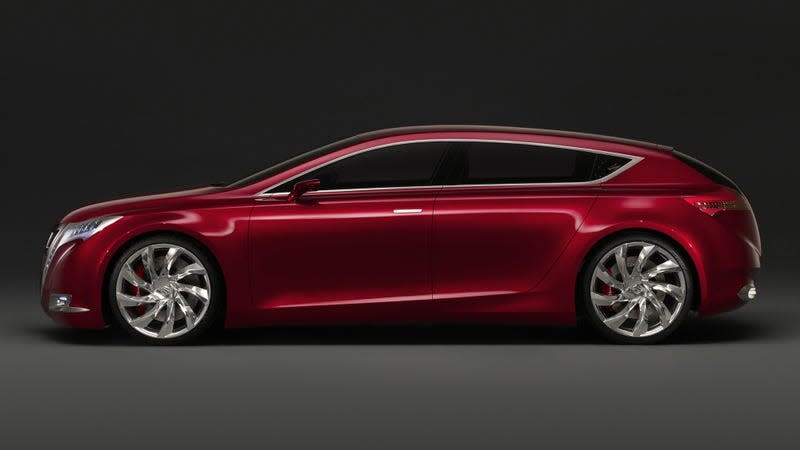
2007 Suzuki Kizashi (concept)
We love the Suzuki Kizashi here at Jalopnik, for reasons nobody’s ever been quite sure of. It’s just one of those cars you see and smile at. Of course, the fact it’s associated with a beloved marque that’s long since passed on from our shores doesn’t hurt its legacy. But have you seen the original Kizashi concept that debuted in 2007? I sure hadn’t until very recently.
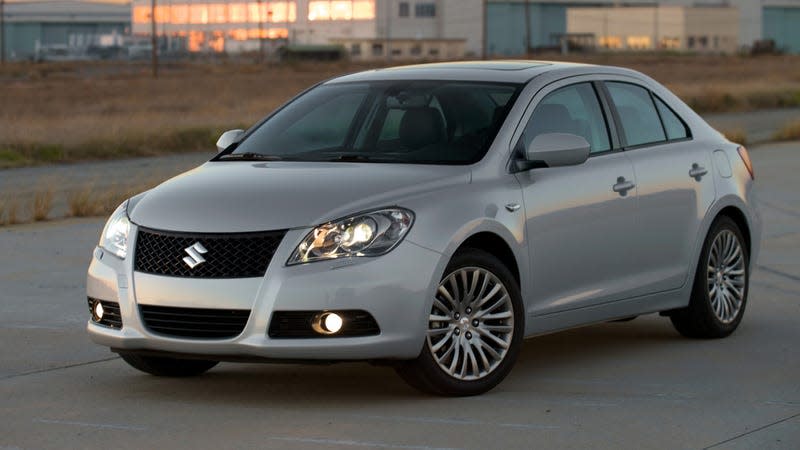
2009 Suzuki Kizashi (production)
People tend to forget the Kizashi sedan happened, so I’ll completely forgive any lack of recollection of the three (3!) Kizashi show cars that immediately preceded the production one — a shooting brake, crossover and four-door. Frankly, I like the real one the best.
Toyota GR Supra
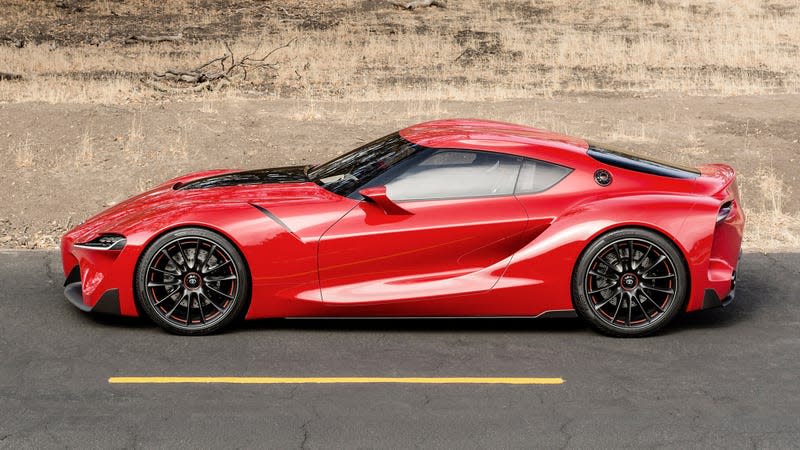
2014 Toyota FT-1 (concept)
Look, it’s abundantly obvious why the Toyota FT-1, revealed in 2014, could not continue onto production without a massive overhaul in pretty much every dimension. Nobody except Toyota can speak to when, precisely, the automaker minted the concept’s design, but it would be many more years before a BMW Z4-based Mk V Supra would emerge. And the switch from a footprint more befitting of a supercar to one belonging to a two-seat roadster can probably tell us a lot about the herculean task facing the exterior design team.
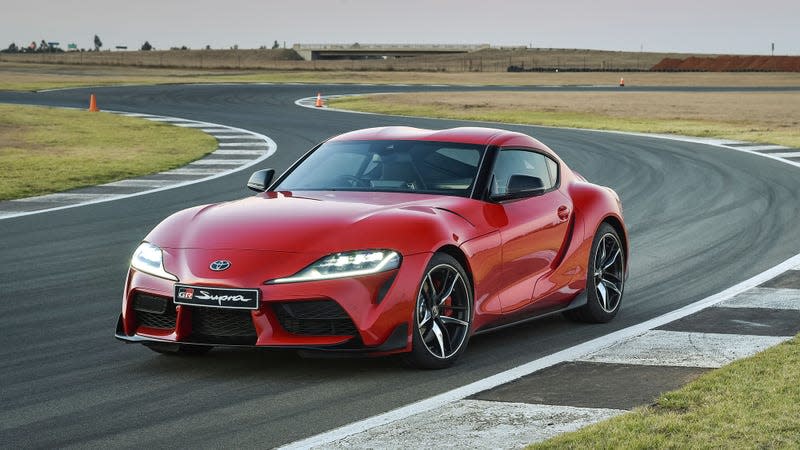
2020 Toyota GR Supra (production)
Still, I think the FT-1-to-Supra evolution is a fascinating one. See, Honda and Nissan decided to go ultra high-end when they reintroduced their flagship sports cars. You get the sense Toyota considered doing that — and pretty much did with the Lexus LF-A — but didn’t want to go down that road again. Credit to them for keeping the Supra attainable. And although I was very much in the camp of those who found the Mk V exceedingly doughy when I first saw it — because I loved the FT-1 so much and expected few changes — it’s definitely grown on me over the years.
Chevrolet Volt
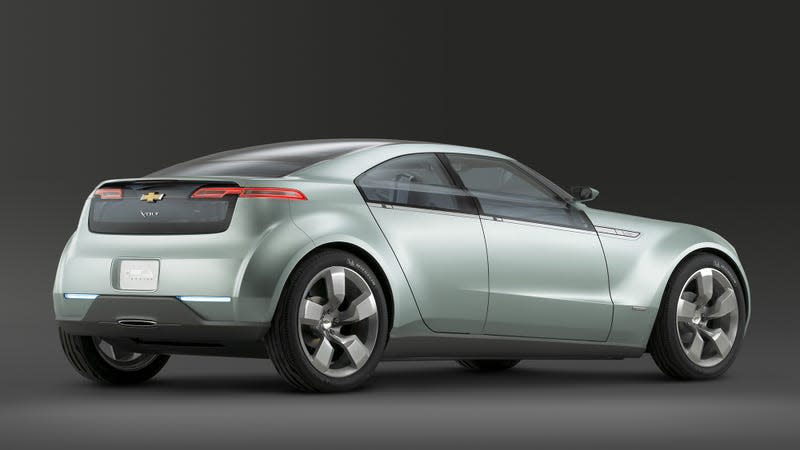
2007 Chevrolet Volt (concept)
The car that would thrust General Motors into the future of electrification originally started life as something decidedly sportier, with a prominent hood, short deck and creative use for glass, particularly around the trunk and side windows. The original Chevrolet Volt was like a baby Camaro from the future. It was pretty neat.
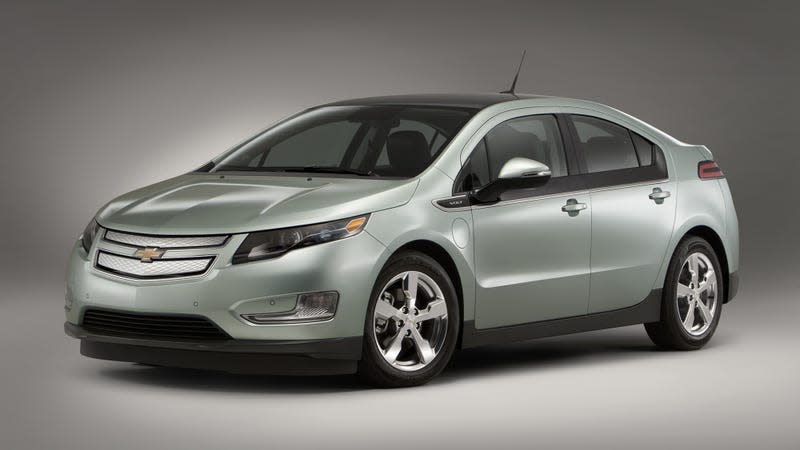
2011 Chevrolet Volt (production)
Of course, the production model lost a lot of those quirks, likely in the name of cost cutting and reducing that all-important drag coefficient. I have absolutely no idea how GM would have been able to recreate the concept’s shaped windows that follow the depth creases in the sedan’s profile; they would have been impossible to roll down. But damn, they looked so good on the concept, and the excessive piano black cladding on the production car was never going to fool anyone.
More from Jalopnik
Sign up for Jalopnik's Newsletter. For the latest news, Facebook, Twitter and Instagram.

 Yahoo Autos
Yahoo Autos 